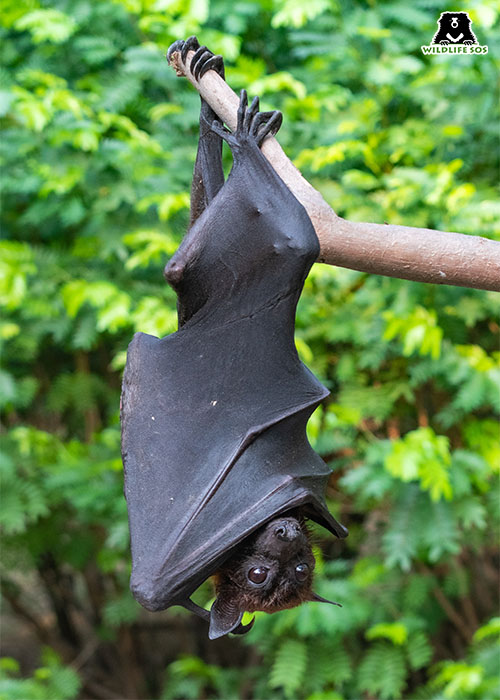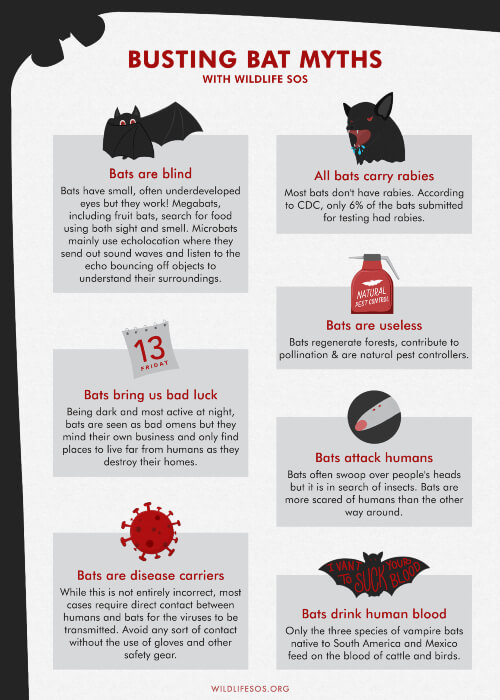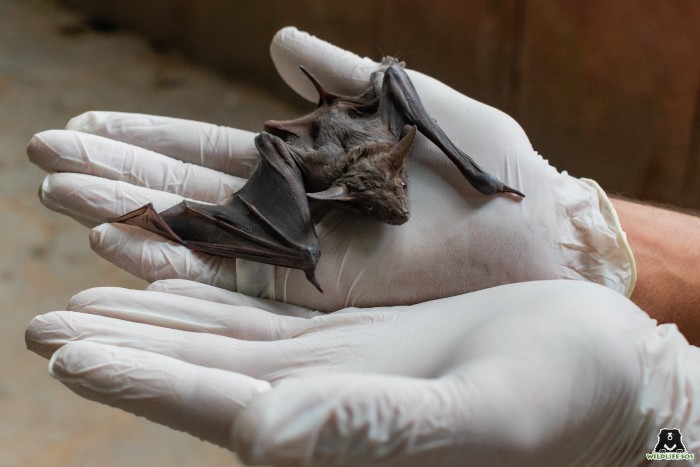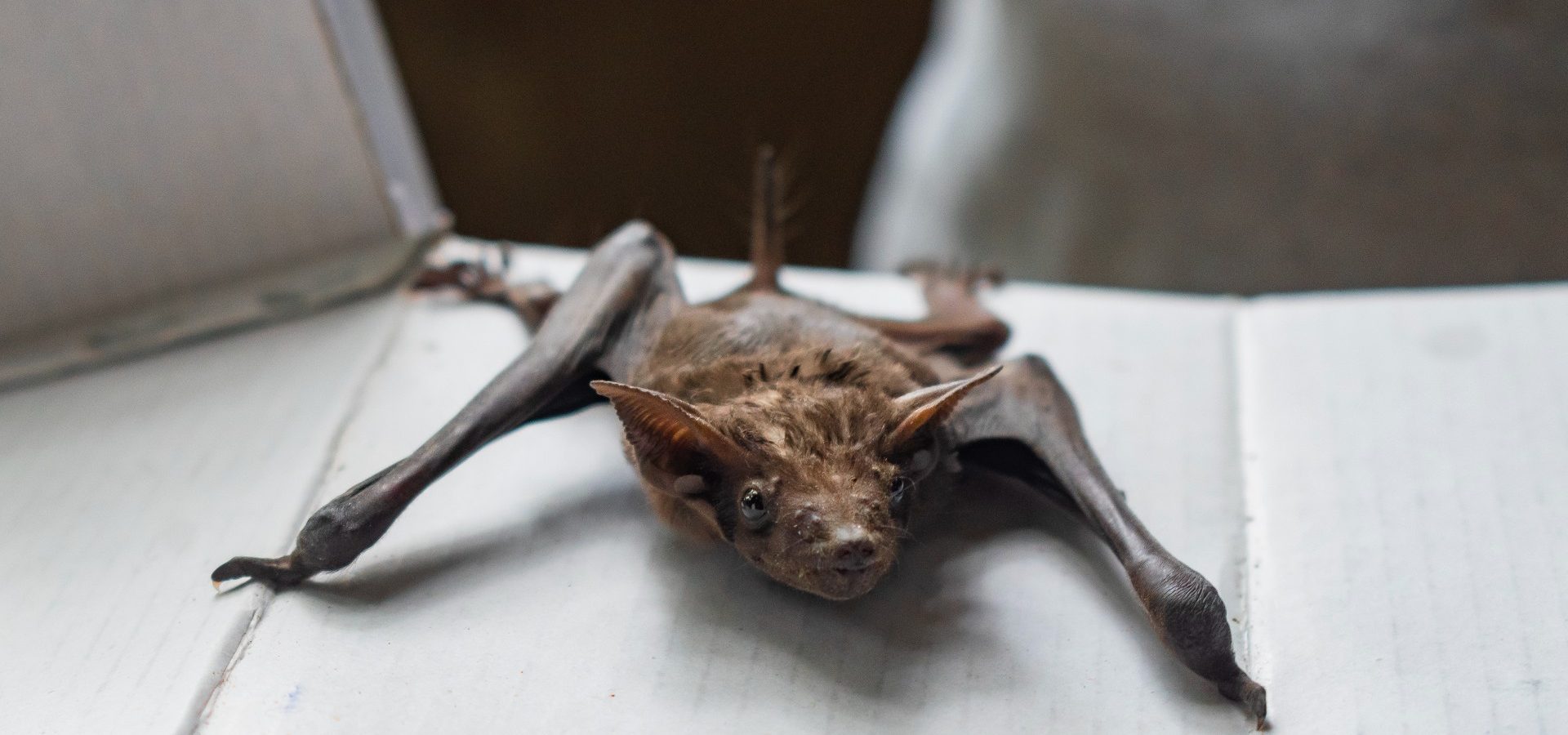Delhi has gone through several stages of urbanisation, albeit not in a positive direction for some of its original inhabitants. When the city was not there, the mighty Aravalli forests stood tall in its place, and the dense forests were home to numerous wild animals. As the green cover degraded and was slowly replaced by urban sprawl, the animals got displaced. But one flying wonder was determined to stay – bats. They are the only mammals with the ability to fly and today’s Delhi-NCR has a high number of bat species that call it home.
Despite the rapid rate of infrastructure expansion, green cover in Delhi is still quite high when compared to other metropolitan areas. There are still havens of small forests that act as the city’s lungs and help to purify its air. Places such as Sanjay Van, Asola Bhatti Wildlife Sanctuary, Okhla Bird Sanctuary, Aravalli Biodiversity Park and Yamuna Biodiversity Park fill the city with an oasis of vegetation. And where there are trees, bats won’t be far away!
City of Bats
While Delhi’s skies are mostly ruled by birds during the day, the nights belong to the bats. These nocturnal denizens are found in large numbers, and 13 species of bats are estimated to be present in Delhi-NCR. But there is a huge knowledge gap when it comes to research and census on bats. Delhi is home to both insectivorous and fruit bats, and the most commonly seen ones include the Indian Flying fox, Short-nosed fruit bat, Fulvous fruit bat, Mouse-tailed bat, Indian Pipistrelle and Least pipistrelle.
Being the heart of the Delhi Sultanate and the Mughals, the city is not alien to a rich architectural heritage. These monuments of the past are like the housing societies of bats. Even Delhi’s Lutyens’ area boasts a high density of bats due to its impressive tree cover. In the vicinity of Rashtrapati Bhavan, India Gate and Bangla Sahib Gurudwara, Indian Flying foxes can be seen busy hovering around.
The Indian Flying fox is certainly India’s largest and one of the world’s largest bats in the world, with a wing span that can go well over 4 feet! The Flying foxes are either frugivorous (eat fruits) or nectarivorous (consume nectar), which means they cannot operate without trees. That’s why the large, old growth trees of Lutyens’ Delhi act as a roosting site for the bats and a lot of bat activities are seen mostly near trees. The most common plants that act as a habitat for these large bats are Arjun trees, Ashoka trees and Jamun (Java or black plum) trees.
Habitat and Ecological Role
Short-nosed fruit bats and Fulvous fruit bats are much smaller in size and tough to find without a trained eye. Short-nosed bats can be spotted roosting in the dense foliage of tall trees, making tent-like structures with leaves. In the context of bats, roosting simply means a place where they can take shelter or protection. That is why abandoned monuments are perfect bat roosts. Bats are found in the relics of Hauz Khas and a Tughlaq-era mosque in Khirki extension; there are pictorial records of Mouse-tailed bats roosting inside the Firoz Shah Kotla mosque as well.
Since the last proper survey of bats done in 2007 by husband-wife scientist duo C. Srinivasulu and Bhargavi Srinivasulu, the number of bat species in Delhi stood at 13. But researchers have not found at least two to three of them when another recent study was conducted over a long period. However, a new bat species was discovered flitting about in Delhi, namely the Lesser yellow house bat. This bat is known to be a generalist as it roosts in diverse locations such as trees, buildings and even toilet ducts! Generalist bats are known to have a varied diet, including fruits. However, the diet of Lesser yellow house bats consists of insects such as beetles, moths and termites as well!

The existence of bats in any ecosystem is paramount to pollination and seed dispersal, and their role in nature cannot be emphasised enough. They help in the pollination and dispersal of mango, cashew, fig, banana and agave seeds. There are certain plant species that have flowers with special morphological features that help in bat-dependent pollination. Crescentia, Haplophragma and Kigelia are a few of the trees in Delhi pollinated by bats. Bats can therefore be considered as indicators of the general health of an ecosystem. Without bats, so many trees won’t be able to grow. And without trees, we all know what can happen!
Conserving Bats in Urbanland
Despite being of such significance, bats have been persecuted and victimised due to various myths and superstitions. Some of the most bizarre ones that are believed to be true are that bats are birds, that all bats carry rabies and that bats are blind. The most common misbelief however, is that bats drink human blood and turn us into vampires. It is merely their distorted representation in pop culture that influences people to believe these myths. Bats are often considered vermin, and even the Indian Wildlife (Protection) Act, 1972 lists them as such.

These perceptions unnecessarily harm an extremely intelligent mammal and undermine their value in nature. However, with rising awareness, there is a gradual change in people’s perception and with their cooperation, Wildlife SOS has rescued bats on numerous occasions from various places across Delhi. The Rapid Response Unit rescued an Indian Flying fox from the North Delhi University area after receiving a call from one of the residents there. The bat had collided with a post and injured its neck, following which it was treated and released safely back in the wild.
According to our rescue team, most of the bat-related calls are related either to their collision with an object or dehydration due to very warm temperatures. In Delhi’s extreme summers, when the mercury reaches nearly 45 degree Celsius, bats can be seen flapping their wings vigorously and sticking out their tongues to get respite from the heat. The year 2022 recorded the hottest March for India in 122 years, while 2023 registered the hottest February in 122 years.

Global warming is making the possibility of heatwaves more frequent. This can severely affect the health of bats and their overall population. So, if you ever see a bat in distress or fallen on the ground, do not hesitate to contact the Wildlife SOS 24×7 emergency helpline of Delhi-NCR (+91 9871963535) for immediate help.





